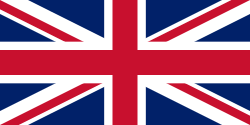This article needs additional citations for verification .(May 2022) |
| Act of Parliament | |
 | |
| Long title | An Act for the Union of Great Britain and Ireland |
|---|---|
| Citation | 39 & 40 Geo. 3. c. 67 |
| Territorial extent | Great Britain |
| Dates | |
| Royal assent | 2 July 1800 |
| Commencement | 31 December 1800 – 1 January 1801 |
| Other legislation | |
| Amended by | |
| Relates to | |
| Status | |
| England and Wales | Amended |
| Scotland | Amended |
| Republic of Ireland | Repealed by the Statute Law Revision Act 1983 |
| Northern Ireland | Amended |
| Text of statute as originally enacted | |
| Revised text of statute as amended | |
| Text of the Acts of Union 1800 as in force today (including any amendments) within the United Kingdom, from legislation.gov.uk. | |
| Act of Parliament | |
 | |
| Long title | An Act for the Union of Great Britain and Ireland |
|---|---|
| Citation | 40 Geo. 3. c. 38 (I) |
| Introduced by | John Toler [1] |
| Territorial extent | Ireland |
| Dates | |
| Royal assent | 1 August 1800 |
| Commencement | 31 December 1800 – 1 January 1801 |
| Repealed | 24 November 1962 |
| Other legislation | |
| Amended by | Statute Law Revision (Ireland) Act 1879 |
| Repealed by | Statute Law Revision (Pre-Union Irish Statutes) Act, 1962 |
| Relates to | |
| Status | |
| Republic of Ireland | Repealed by the Statute Law Revision (Pre-Union Irish Statutes) Act 1962 |
| Northern Ireland | Still in force with amendments |
| History of passage through Parliament | |
| Text of statute as originally enacted | |
| Revised text of statute as amended | |
The Acts of Union 1800 (Irish : Achtanna an Aontais 1800) were parallel acts of the Parliament of Great Britain and the Parliament of Ireland which united the Kingdom of Great Britain and the Kingdom of Ireland (previously in personal union) to create the United Kingdom of Great Britain and Ireland. The acts came into force between 31 December 1800 and 1 January 1801, and the merged Parliament of the United Kingdom had its first meeting on 22 January 1801.
Contents
- Name
- Background
- Passage
- Provisions
- The first parliament
- Flags and styles
- Notes
- References
- Bibliography
- Further reading
- External links
Provisions of the acts remain in force, with amendments and some Articles repealed, in the United Kingdom, [2] but they have been repealed in their entirety in the Republic of Ireland. [3]




